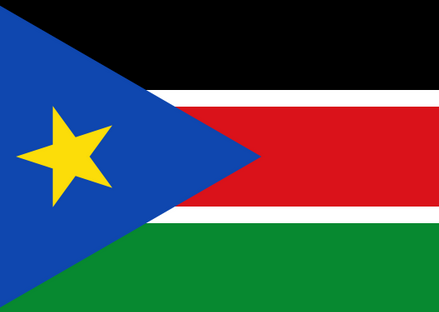South Sudan is the world’s newest country. It is also among the world’s least developed, most conflict prone, and home to one of the world’s most urgent humanitarian crisis.
Much of South Sudan’s current woes stems from its unresolved conflict with its neighbor to the north, and an unrelenting campaign by Khartoum in Sudan’s border region which has caused massive refugee flows to already fragile communities.
Meanwhile, the engine of South Sudan’s economy –vast oil reserves–are not filling government coffers. The south has the oil. The north has the pipelines, but the two haven’t figured out a proper revenue sharing scheme yet. This is causing an economic crisis on top of a staggering humanitarian emergency.
One year ago this week, the South declared independence in a peaceful ceremony and was granted membership. These facts and figures tell a story of a tumultuous first year since independence.
Inflation Crushes the Economy
The price of food and fuel has reached unprecedented levels. Inflation shot from 21.3 percent in February to 80 percent in May, pushing essential food and supplies way beyond the reach of ordinary people. Half of South Sudan’s 9.7 million people are facing food shortages – more than double the number last year.
In South Sudan’s Upper Nile region, where Oxfam is delivering water and sanitation to refugees who continue to flee fighting in Sudan, inflation and conflict have forced fuel prices up by 111 percent. A 200-litre barrel of fuel now costs up to $1600, compared to $600 in January this year.
Refugees from the North Exacerbate an already fragile situation.
There are currently about 170,000 Sudanese refugees being provided with humanitarian assistance in South Sudan. A further 406,000 Southern Sudanese living in the north are returning home.
As the humanitarian situation north of the border worsens, the stream of refugees heading south is increasing at a worrying rate. In one camp in the Upper Nile State, things are getting particularly dire. From MSF.
After heavy rains the majority of Jamam camp became flooded the night of June 26. Latrines have overflowed, contaminating standing water. There is a general shortage of potable water. Many camp residents sleep in wet clothes under soaked blankets, leaving them vulnerable to hypothermia.
Over the last two weeks, MSF medical teams in Jamam have treated at least 2,500 people for diarrheal diseases, respiratory diseases, malaria, and malnutrition. As the rains increase, more and more people are falling ill, especially from malaria and hypothermia. Young children are the most vulnerable.
“Our clinic is already filled with children suffering from pneumonia, diarrhea, and malnutrition,” said Dr. Erna Rijnierse, working with MSF in Jamam. “If they stay in these sorts of conditions, there could well be profoundly distressing consequences.”
Preliminary medical data gathered by MSF in Jamam Camp during the week of June 18, before the onset of consistent heavy rains, revealed a mortality rate among children of 2.8 per 10,000 per day, above the emergency threshold of 2/10,000 per day. The crude, or overall, mortality rate was registered at 1.8, while the emergency threshold is set at one. At the Jamam camp alone, almost nine children are dying per day. Sixty-five percent of deaths were reportedly due to diarrhea.
Food Security is a big problem. From the Famine Early Warning System:
Since the independence of South Sudan from Sudan nearly one year ago, food security conditions in both countries have deteriorated, due to poor 2011/2012 harvests, widespread conflict, macroeconomic instability, and severely disrupted trade flows which have limited market supplies. The impacts are most severe in border areas, where conflict, displacement, and trade restrictions are concentrated. In Sudan, areas of most concern include those controlled by the Sudan People’s Liberation Movement-North (SPLM-N) in South Kordofan and Blue Nile. In border areas of South Sudan, concerns are greatest in Northern Bahr El Gazal, Warrap, Unity, and Upper Nile states. In both countries, Crisis and Emergency levels of food insecurity (IPC Phases 3 and 4) will persist through at least September. After September, harvests are likely to bring some temporary improvements. Emergency assistance to save both lives and livelihoods is required.
Donor Support…not quite there.
Of $1.1 billion that the United Nations says is required to deal effectively with South Sudan’s multiple humanitarian crises, only $511 million has been delivered.
